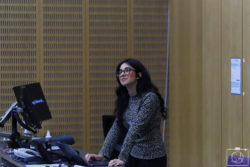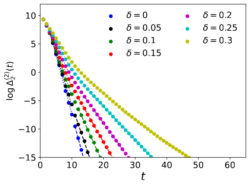In this case study we hear from Hibah Saddal, a PhD student in Aerospace Engineering. At the 14th BEAR Conference 2025, I had the opportunity to present my research carried out with my PhD advisor, Dr. Chandan Bose, on bio-inspired fluid-structure interaction (FSI) problems, where we leveraged open-source tools to model and simulate flexible structures … Continue reading “Bio-Inspired FSI and HPC-Driven Aerodynamic Optimization”
Tag: storage
BEAR helps delve into the infant gut and malnutrition
In this case study we talk to Leon, a PhD student in the Department of Microbes, Infection and Microbiomes, who is using bioinformatics of microbes that encompass the human gut microbiome. The human gut is inhabited by trillions of microbial cells and most of those cells have very important roles in human health. My work … Continue reading “BEAR helps delve into the infant gut and malnutrition”
Using BEAR to peel back the layers on potato genetics
In this case study we talk to Jack, a PhD student in Biosciences, who is using bioinformatics to understand plant genetics. I am a PhD student working in plant sciences supervised by Dr Lindsey Compton. My research focuses on using bioinformatics to understand plant genetics. Canopy architecture traits, like height and area, impact photosynthesis, drought … Continue reading “Using BEAR to peel back the layers on potato genetics”
How I used BEAR to understand investor behaviour in FinTech markets
In this case study we talk to Mohammad B M A J Aldoub, a PhD student in Economics, who is investigating how investors react to negative shocks in peer-to-peer (P2P) lending platforms. My research examines how investors react to negative shocks in peer-to-peer (P2P) lending platforms, with a particular focus on belief dispersion during uncertain times. P2P lending refers … Continue reading “How I used BEAR to understand investor behaviour in FinTech markets”
Reflections from the BEAR Conference 2025
The 14th annual BEAR Conference, a vibrant event organised by postgraduates for postgraduates, took place on 22 May 2025 at the Alan Walters Building—and what a fantastic day it was! With 55 attendees, the conference was packed with insightful talks, lively discussions, and a strong sense of community. Dietmar Heinke, Chair of the BEAR User … Continue reading “Reflections from the BEAR Conference 2025”
Shaking up mixing: optimising mixing using BlueBEAR
In this case study we talk to Emily Allman, MEng Chemical Engineering undergraduate student, who looked into the efficiency of Resonant Acoustic Mixers (RAM) using BlueBEAR, for her final-year research project. Emily presented her paper at the recent BEAR PGR Conference 2025. I am a final-year MEng Chemical Engineering student at the University of Birmingham. For … Continue reading “Shaking up mixing: optimising mixing using BlueBEAR”
Planned work to improve resilience of the Research Data Store
Users of the Research Data Store (RDS) may have noticed intermittent performance issues affecting storage recently, which has been causing some disruption to users. This work is a necessary precursor to a major program of work in which we will replace, expand and enhance, the RDS service. Phase 1 Between now and summer 2025 we … Continue reading “Planned work to improve resilience of the Research Data Store”
Utilising BlueBEAR for radiation transport simulations and computational fluid dynamics
In this case study, we hear from Kiran Nutter (PhD student in the Nuclear Physics group), who has been utilising BEAR to study applications of gamma ray imaging. I am a PhD student in the Nuclear Physics group at the University of Birmingham, and a part of the EPSRC Centre for Doctoral Training in Topological design. … Continue reading “Utilising BlueBEAR for radiation transport simulations and computational fluid dynamics”
Quantum chemical modelling of solids for optoelectronic applications
In this case study, we hear from Peter Russell (School of Chemistry), who has been utilising BlueBEAR to focus on the computational and theoretical modelling of novel solid-state materials. I am a first year PhD student in the Scanlon Materials Theory Group, based in the School of Chemistry. The group is focused on the computational … Continue reading “Quantum chemical modelling of solids for optoelectronic applications”
10,12,14 to infinity: quantum research is classically hard
In this case study, we hear from Jonathon Riddell (School of Physics), who has been utilising BlueBEAR to study strongly correlated quantum systems out of equilibrium. My name is Jonathon Riddell, I am a fellow of non-equilibrium physics, in the Theoretical Physics Group. I am working on several projects, all of them with heavy reliance … Continue reading “10,12,14 to infinity: quantum research is classically hard”










